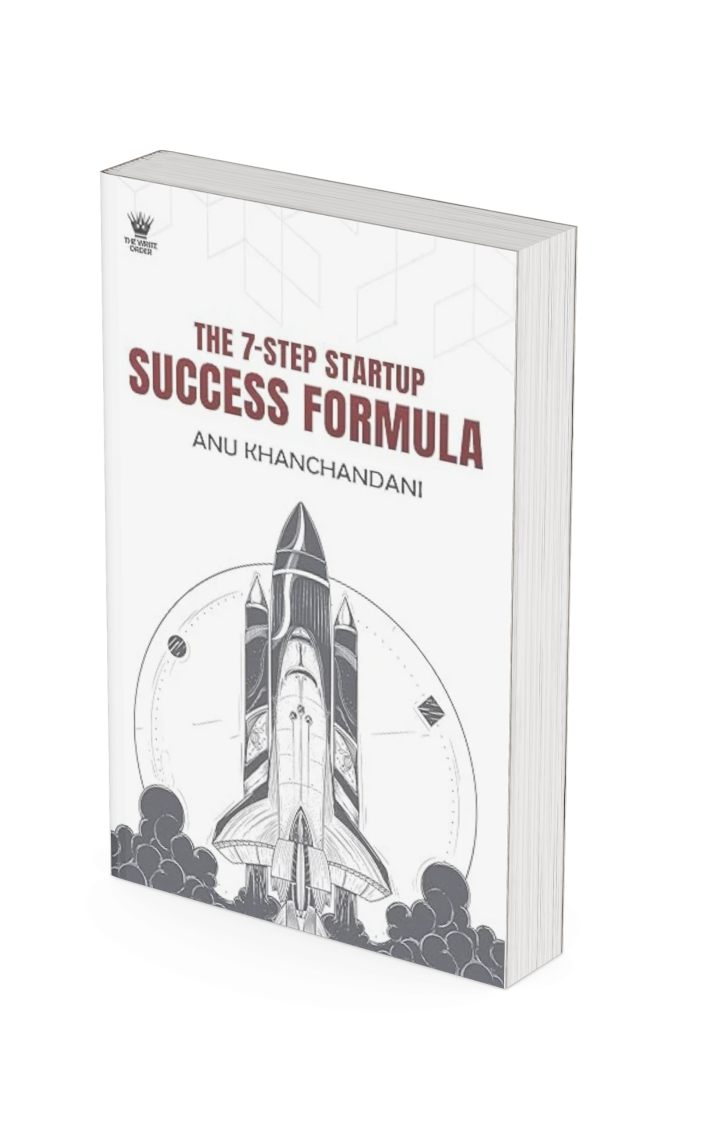There are no items in your cart
Add More
Add More
| Item Details | Price | ||
|---|---|---|---|
Curious about how Elon Musk navigated Seed and Series A funding for Tesla and SpaceX? Discover the critical differences and strategies to secure the right funding for your startup!
Thu Jul 25, 2024
Listen to the Startup Mantras Podcast on your favourite podcast host.

THE 7-STEP STARTUP SUCCESS FORMULA
I am not the only Business Coach around. There are many distinguished business coaches and gurus out there. At the end of the day, our aim is not just to give you knowledge and jargon.In this book, I have mentioned 7 defined steps to reach your startup milestone, condensed with my 25 years of experience.
___ by Anu Khanchandani
Intro
Hi! Welcome to the Startup Mantras Podcast. This is Anu Khanchandani - Engineer, Entrepreneur, Startup Coach for the past 25 years. I'm here to share valuable lessons for Startups in terms of success and failure stories, processes, tools, and techniques, which can be applied by Startup Founders in various aspects of their Startup Journey.
Today, we’re diving deep into the essential stages of startup funding: Seed and Series A rounds. To guide us through this journey, we’ll draw on the remarkable experiences of Elon Musk with Tesla and SpaceX. Understanding these stages can be pivotal in securing the right type of funding for your startup.Let’s start with Seed funding. This is the initial capital you seek to get your startup off the ground. Seed funding is often used to develop your prototype, conduct market research, and build a minimal viable product (MVP). Elon Musk’s journey with Tesla is a great example. In the early days, Musk needed seed funding to turn his vision of an electric car into a reality. This early capital was crucial for developing the Roadster, Tesla’s first production vehicle. Investors at this stage are betting on the potential of your idea and the capability of your team. They’re often angel investors or early-stage venture capitalists who are willing to take a high risk in exchange for equity in your startup. For Musk, this meant convincing investors that Tesla wasn’t just a novel idea but a groundbreaking initiative in the automotive industry.Seed funding can come from various sources, including personal savings, family and friends, angel investors, and early-stage venture capital firms. It’s essential to prepare a compelling pitch that highlights the uniqueness of your idea, the problem it solves, and the potential market size. For Tesla, the pitch was about revolutionizing the automotive industry with sustainable electric vehicles. Musk’s vision and the early development of the Roadster helped secure the seed funding necessary to move forward.As your startup progresses, you may seek Series A funding. This stage is for companies that have moved beyond the initial development phase and are ready to scale. By this point, you should have some traction, such as a working product, initial customers, and proof of concept. Series A investors are looking for evidence that your business model works and that you have a plan for growth. Elon Musk’s experience with SpaceX highlights the Series A stage perfectly. After achieving initial milestones, including successful rocket launches and contracts with NASA, SpaceX required Series A funding to expand its operations and develop more advanced rockets. Investors in this round look for demonstrated success and a clear path to scaling.To attract Series A investors, focus on presenting data-driven results and a well-defined growth strategy. Musk’s approach included showcasing SpaceX’s achievements and future plans, which reassured investors about the potential returns on their investment. It’s also crucial to have a strong team in place, as investors want to see that you have the right people to execute your vision. For SpaceX, the ability to demonstrate early successes and a clear path to further milestones was key to securing Series A funding.Understanding the differences between Seed and Series A funding can help you strategize your funding efforts. At the seed stage, focus on showing your vision and potential. For Series A, provide concrete data and growth metrics. By aligning your approach with what investors expect at each stage, you can enhance your chances of securing the funding you need to scale your startup.In summary, Seed funding is about turning your vision into reality, while Series A funding is about scaling your proven concept. Elon Musk’s journeys with Tesla and SpaceX provide valuable lessons in navigating these stages. By learning from his experiences, you can better prepare your startup for each funding round and attract the right investors at the right time.
Outro
If you're interested in discussing how to navigate your startup journey or want to explore innovative solutions for your business challenges, visit my website www.thegreycells.com and Book an Appointment with me. I'd be thrilled to contribute to your startup's success.Until next time - Ciao and have a great life!

Dr. Anu Khanchandani
With over two decades of experience in the software technology arena, having worked in multinational and SME companies in India, USA and Singapore in the capacity of programmer to CTO - I felt now was a good time to give back to the world what I have learnt in this journey. Even if it ends up benefitting a few of my readers by giving them insight or solving a technical issue, I think I will have achieved my mission!
 Launch your Graphy
Launch your Graphy